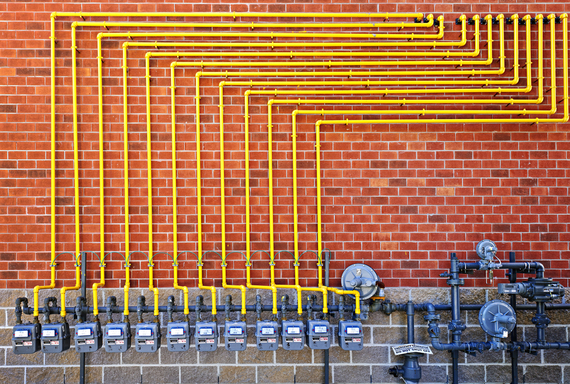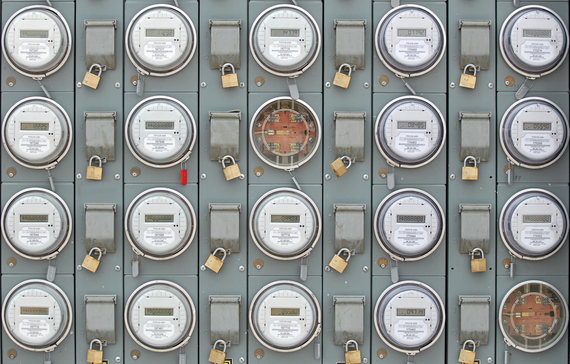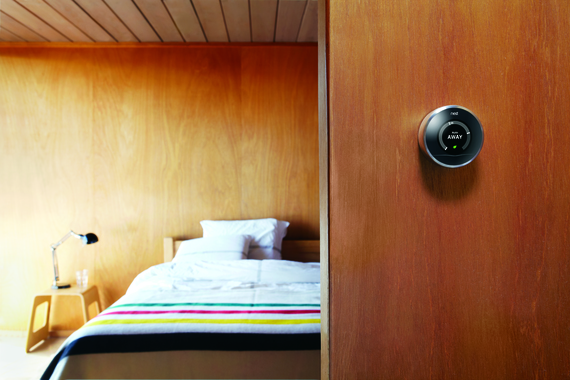No longer the stuff of sci-fi lore, the 'Internet of Things' is transforming energy management. By 2020, there will be 50 billion connected devices and three billion of these devices will be internet-based utility meters. So, it's safe to assume that connected energy is coming to a home near you. Technological innovation in this field may not attract the same excitement seen in other tech areas, but that's unimportant. Energy is not a fad, it's a necessity for technocrats and technophobes alike. From widespread initiatives to individualized innovations, here's a rundown of the major trends shaping the future of connected energy.
The Smart Grid
It's impossible to talk about energy and the 'Internet of Things' without mentioning the Smart Grid. The future of energy-related connected devices hinges on it. The smart grid facilitates energy transmission through a digitally optimized grid system, which is in stark contrast to its traditional roots. For a period of 100 years, the traditional power grid evolved from individual grids to a central one with one simple goal: keep the lights on. While that aspect hasn't changed much, our thinking about efficiency has. The ad-hoc design of the traditional grid lacks efficiency and isn't environmentally friendly.
However, the smart grid aims to eradicate the inefficiencies of the past. By facilitating a two-way connection between customers and utility providers, it will be simpler for users to understand how they consume energy. With real-time accessibility to personal consumption data and energy prices, both customers and providers will have a clearer idea of how energy is used.
Additionally, the smart grid will bring energy innovation for public and private services. City streetlights with inbuilt sensors will brighten upon detection of movement. Smart buildings will function effectively with demand-driven energy supply. Sensors systems placed throughout buildings will enable optimized energy consumption. The smart grid's connected capacity will allow individual properties to accurately monitor energy usage. For example, a smart building will automatically detect if there are fewer people and adjust its energy output accordingly. Another predicted feature of the smart grid is dynamic pricing of electricity; for example, if demand for electricity decreases in the evening, the prices that night will be lower.
The future of the smart grid is inextricably tied to the overall experience of the connected home. Take home appliances, for example. Consumers use energy rating charts to estimate the energy output of appliances but it's hard to measure energy consumption of appliances once in use. A recent trend for appliance brands is to add eco-friendly options for dishwashers and washing machines, yet, there is still no direct way to measure how much total energy these options use.
In the not so distant future, smart appliances will have energy-management tools for lowered energy consumption. And by using smartphone apps, it will be possible to find out how much energy a washing cycle uses. A glance at your phone will be able to tell you when it's cheapest to use your dishwasher and even if you're not physically present, you'll still be able to run it. Although these features are a rarity in appliances today, in the future their ubiquity will highlight the importance of smart grid connectivity.
Smart Thermostats and Smart Meters
We're already starting to see how the smart grid will impact energy use through in-house smart devices. Imagine you're on your way home, but you've forgotten to set your heating to coincide with your return. Once you are in close proximity to your home, your heating will swiftly turn on, which is made possible through the meter's detection of your smartphone's GPS signal.
Maybe you've no idea why your energy bills are so high? Your smart thermostat can identify your usage patterns over time to help you reduce your bills in real-time. Smart thermostats also detect outdoor weather conditions, so the indoor temperature is suitably adjusted.
And this is only the beginning of things to come. The future of smart thermostats and meters can be summed up in one word: personalized. As thermostat-makers want to understand our heating/cooling patterns, they will continually aim to provide a user-friendly experience. In turn, this will reinforce the thermostat's knowledge of its users.
Google's recent acquisition of thermostat-maker Nest is yet another indicator of smart energy's mainstream arrival. In Europe, spending on smart electricity meters is estimated to reach $25 billion by 2020, and already in Sweden and Italy smart meter penetration is at 100%. Meanwhile, the UK government is rolling out smart meters in all homes and businesses by 2020.
So, what is it about smart thermostats and meters that makes them so innovative? One important aspect is timing. Current energy prices are at a record high, and customers want to know exactly how their money is being spent. Smart thermostats and meters clearly show where and how energy is consumed, so there are no surprise bills. The use of smart communication sensors gives occupants more control over their energy use. Energy users will be more empowered to control their consumption once they have access to this information. How consumers use this information to manage energy habits will be the real test of how effective these devices are.
Smart Lighting
Thermostats and meters aren't the only things getting an 'Internet of Things' revamp. Once a seemingly mundane electrical component, light bulbs are now connecting online. As leading electrical brands vie for top spot, there are many changes afoot for the bulb.
One thing is immediately clear about the smart bulb: it's not just about lighting anymore. LG's new smart bulb functions as a security system, a morning alarm, and a party system. When in 'party mode' the bulbs flash in beat with music from the connected smartphone. When away from home, the bulbs will light up between intervals to deter burglars. The LIFX bulb also boasts similar features with the lights gradually brightening for a gentler morning alarm. These features are a long way from the first ever light bulb in 1809, when its sole purpose was to provide light.
Bright Lights and Beyond
Energy innovation persists because its necessity demands evolution. It doesn't matter if it's a remote village, packed city or suburban home. Energy innovations have the potential to affect individuals the world over. The 'Internet of Things' is an interesting intersection for energy innovation because of the possibilities it opens up. Whether it's direct energy management or diverse use of electrical items, this is just the beginning of the inventions to come.


